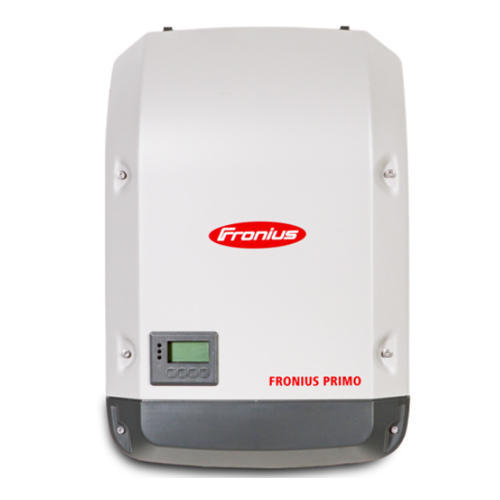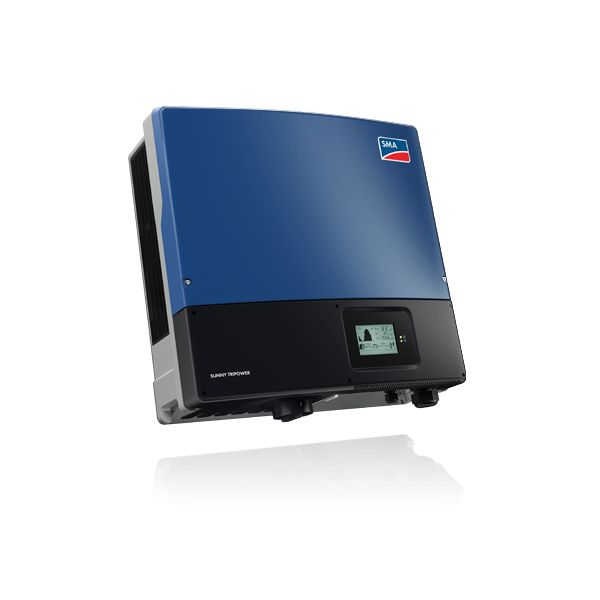Solar Inverters
Your Comprehensive Guide To Choosing The Best Solar Inverters for 2019
Solar inverters are a pivotal part of any solar system. They also happen to be one of the most expensive and complex pieces of equipment in most solar power setups. There is an enormous variety of inverter technologies available now but choosing the right solar inverter for your specific requirements is vitally important.
Choosing the wrong inverter can lead to endless headaches with poor performance, incompatibility with your solar panels, batteries or grid-tie system, and short-lived warranties.
Solar inverters come in a range of prices too but trying to cut costs by buying a cheap inverter could cost you more further down the track. Inefficient power management and the need to replace inverters more frequently are particularly common issues with cheaper inverters.
So to avoid the nightmares and to help you sort out the right inverter for your needs here are some of the most common FAQs.
What is a Solar Panel Inverter?
Solar inverters convert the DC (direct current) power from your solar panels into usable AC (alternating current) electricity that is suitable for powering your home appliances, lights, and gadgets.
Solar inverters can also feed excess power into the grid or divert it into your batteries. Inverters can also manage your battery storage and usage.
In general inverters also maximise the power output of your solar panels. Some inverters can even optimise the power output from individual solar panels.
Most advanced inverters also provide monitoring and reporting systems so that you can see at a glance how your solar array is performing.

So, Why Do You Need an Inverter?
DC electricity is the type of current that solar panels produce. But due to certain historical events AC current was chosen as the type of current for powering homes and appliances.
DC always moves in the same direction whereas you could picture AC current as more like the atoms jumping about in one place. In simple terms, an inverter converts this straight-line current to usable AC current by reversing the current around 50 or 60 times each second.
These abrupt changes of direction produce a square shaped energy wave, which can be very damaging to sensitive appliances such as computers. Sine wave inverters are able to smooth out these direction changes and produce a smoothly curving sine wave.
The main types of inverters include:
Each type of inverter has particular strengths. We’ll cover the differences in more detail later on but most residential solar panel systems will probably use either string inverters or micro inverters.
Many solar inverters can also ensure that the electricity delivered to your appliances is in a pure sine wave form. Some sensitive appliances, in particular whiteware and computers require pure sine wave current to protect their sensitive circuitry.
Inverters also provide safety shutdown mechanisms (known as anti islanding protection) in the event of a dangerous fault. Some inverters offer remote monitoring capabilities too so that your installer can provide technical assistance from off-site.
What's the Best Inverter for Me?
Each of the 5 main types of inverters converts and manages solar energy in slightly different ways.
Which one is right for you will depend on a number of factors including the size and type of system, battery backup, and what you want your solar system to do.
It’s vital that your chosen inverter has the capacity to handle the output of your solar panels.
In theory this means that you need a 5kW inverter to handle a 5kW solar panel array.

However, your system may have a small percentage of power loss between the panels and the inverter and so you may be able to run a smaller inverter.
You can undersize your inverter by as much as 25% and this may save you some money on the cost of the inverter.
You can read more about the Clean Energy Council guidelines on undersized inverters here.
String Inverters
String inverters are probably the most common type of inverter in Australian residential solar installations.
You’ll usually only need a single string inverter to convert the cumulative DC output of all your solar panels into AC power.
It means all the solar panels are connected in a string (hence the name).
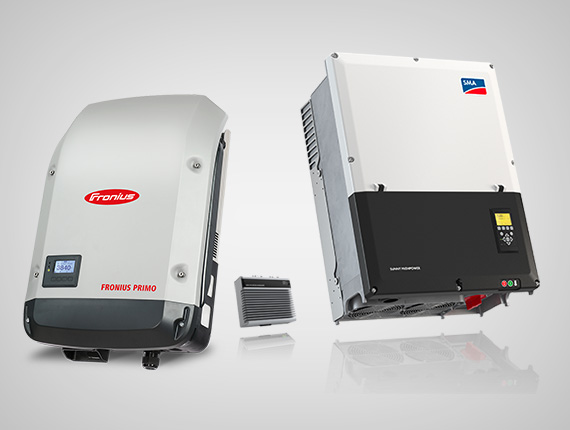
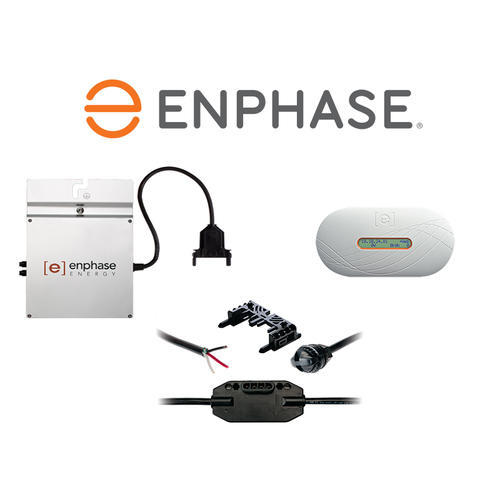
Micro Inverters
Micro inverters, as the name suggests, are tiny inverters (about the size of a small book). The micro inverters are attached to and control a single solar panel. So, you’ll need one micro inverter for every solar panel in your array.
Micro inverters convert the DC power produced by the panel to AC power before it leaves the panel. This means they are also safer because they produce a lower cumulative AC voltage — just 240 V.
This reduces the dangers of arcing and a catastrophic short.
String vs Micro

Micro Inverters
Advantages:
- A micro inverter will continue to optimise the power output of the panel it controls even if shade or a malfunction affects other panels in the array.
- It’s easy to increase the number of solar panels at a later stage with micro inverters too because you don’t need to be concerned about the capacity of a single string inverter.
- Micro inverters are also compatible with battery storage so adding more batteries at a later point poses no problems.
Disadvantages:
- Because you’ll need as many micro inverters as you have panels the initial cost will be a little higher.
- Micro inverters tend to be slightly less reliable than string inverters and maintenance or replacement can be a pain because the micro inverter is placed underneath each solar panel.
String Inverters
Advantages:
- String inverters are cheaper because you only need one of them per string of panels.
- String inverters consume very little power for their operating needs. They are easy to install and most electricians are familiar with them.
Disadvantages:
- A single poorly performing solar panel will have a significant negative effect on total power production with string inverters.
- And if the inverter fails the entire solar system will no longer work. Depending on the type of string inverter adding more panels may require adding additional inverters.
Hybrid Inverters
Hybrid inverters or multi-mode inverters, like string inverters, convert DC current from the panels into AC current for your home. But they can also convert AC current from the grid into DC current for storage in battery banks.
Hybrid inverters provide an effective tool for managing power inputs and usage between solar panels, battery banks, your home, and the grid. This makes the hybrid inverter an ideal choice for any solar system where you may want to add battery storage especially in off-grid applications.
You can use the grid to top up your batteries when solar production is inadequate.
Advantages:
Single all-in-one inverter does it all. Hybrid inverters have a long and solid reputation. They provide comprehensive system-wide monitoring capabilities.
Disadvantages:
May not be as efficient as battery-only or solar-only inverters.
Central Inverters
Central inverters are able to manage multiple strings of solar panels and are generally only found in commercial power settings. Central inverters are too large and expensive for residential use.
Battery Inverters
Battery inverters simply manage the charging and discharging of power from a battery bank. Like other inverters they convert DC current from the solar panels into AC current for home use but they also convert AC into DC for topping up your battery bank.
Advantages:
Allows for flexible system design. Battery inverters can be a good choice if you want to add battery storage later. Ideal for off-grid systems.
What Do They Cost?
You can expect to pay between $1,000 and $2,000 for a 5kW inverter. But as with so much in life you get what you pay for.
Do not be tempted to cut corners by getting a cheap inverter.
Generally, the more expensive inverters will be considerably more efficient and they will be more reliable and last longer too.
What Are The Top 5 Inverters?
We believe in selling only the best inverters because quality is more cost effective in the long-run.
Some of the top model inverters in Australia at the moment include the following:
- Enphase – Micro inverter
- SMA – String Inverter
- Fronius – String Inverter
- Solar Edge SE & HD Wave
What is the Manufacturer’s Warranty?
Always choose an inverter with a good warranty.
An inverter with a 10 year warranty indicates a high degree of reliability and dependability.
- Solar Edge provides an exceptional 25 year warranty.
- Fronius and SMA offer 10 year warranties.
- Enphase micro-inverters are covered for up to 10 years also.
What is the Maximum Efficiency?
The power efficiency of an inverter is critical to the cost savings you can expect from your system. Top inverters such as the SMA or Solar edge have been tested at around 96% to 97% power output efficiency.
Some inferior inverters only have power efficiencies in the low 90s. This may not sound much of a difference but over the life of the inverter it will add up to a significantly reduced return on your solar investment.
Do Solar Inverters Meet Australian Standards?
There are a number of standards that apply to connecting inverters including:
- AS4777
- AS3100
- AS/NZS 3000 Electrical Wiring Rules
Installations must also comply with IEC62109.1 and IEC62109.2.
In addition there are a range of related standards that apply and you can learn more about these here. All our inverters are approved for use in Australia. You can check out the complete list of approved inverters here.
Solar Inverter Products
Fronius Inverters - String
The technological progression for power generation are evolving in a constant manner.
The highly functional inverters can keep the PV system produce optimal yields for decades and are therefore very much in demand.
It should thereby make sure that every new solar technology and solution improves and improvises reliability. It increases energy yield and makes PV system more full proof.
SMA Inverters - String
The SMA solutions are tailored for both industrial as well as for commercial usages. These solutions are future proof along with it being profitable and flexible.
With SMA system solutions, the self generated solar power works in an efficient manner and thereby it decreases operating costs.
